

| Region rejsu : UAE / Zatoka Perska, Persian Gulf |
| Firma : Costa Cruises |
| Statek : Costa Toscana |
| Data rozpoczęcia : czw. 05 mar 2026 |
| Data zakończenia : czw. 16 kwi 2026 |
| Liczba nocy : 42 nocy |
| Dzień | Data | Port | Wypłynięcie | Odpłynięcie |
|---|---|---|---|---|
| 1 | 5.03 czw. | Doha / Katar | 17:30 | |
| 1 | 5.03 czw. | Zatoka Doha | 18:00 | 20:00 |
| 2 | 6.03 pt. | Abu Zabi / UAE | 07:00 | 22:00 |
| 3 | 7.03 sob. | Dubai / UAE | 07:00 | |
| 4 | 8.03 niedz. | Dubai / UAE | 05:00 | |
| 5 | 9.03 pon. | Dzień na morzu / Morze | ||
| 6 | 10.03 wt. | Dzień na morzu / Morze | ||
| 7 | 11.03 śr. | Dzień na morzu / Morze | ||
| 8 | 12.03 czw. | Dzień na morzu / Morze | ||
| 9 | 13.03 pt. | Dzień na morzu / Morze | ||
| 10 | 14.03 sob. | Dzień na morzu / Morze | ||
| 11 | 15.03 niedz. | Port Louis / Mauritius | 10:00 | 19:00 |
| 12 | 16.03 pon. | Dzień na morzu / Morze | ||
| 13 | 17.03 wt. | 27,3 S 42,6 E Ocean Indyjski | 23:00 | 23:29 |
| 14 | 18.03 śr. | Dzień na morzu / Morze | ||
| 15 | 19.03 czw. | Dzień na morzu / Morze | ||
| 16 | 20.03 pt. | Port Elizabeth / South Africa | 08:00 | 20:00 |
| 17 | 21.03 sob. | Dzień na morzu / Morze | ||
| 18 | 22.03 niedz. | Kapsztad / South Africa | 06:00 | 19:00 |
| 19 | 23.03 pon. | Dzień na morzu / Morze | ||
| 20 | 24.03 wt. | Walvis Bay/Zatoka Walwis / Namibia | 14:00 | |
| 21 | 25.03 śr. | Walvis Bay/Zatoka Walwis / Namibia | 18:00 | |
| 22 | 26.03 czw. | Dzień na morzu / Morze | ||
| 23 | 27.03 pt. | Dzień na morzu / Morze | ||
| 24 | 28.03 sob. | Dzień na morzu / Morze | ||
| 25 | 29.03 niedz. | Dzień na morzu / Morze | ||
| 26 | 30.03 pon. | Dzień na morzu / Morze | ||
| 27 | 31.03 wt. | Dzień na morzu / Morze | ||
| 28 | 1.04 śr. | Dzień na morzu / Morze | ||
| 29 | 2.04 czw. | Dzień na morzu / Morze | ||
| 30 | 3.04 pt. | 26,4 N16,6 W Ocean Atlantycki | 23:00 | 23:59 |
| 31 | 4.04 sob. | Arrecife de Lanzarote / Canary Islands | 10:00 | 20:00 |
| 32 | 5.04 niedz. | Santa Cruz, około. Teneryfa (Wyspy Kanaryjskie) / Hiszpania | 07:00 | 17:00 |
| 33 | 6.04 pon. | Dzień na morzu / Morze | ||
| 34 | 7.04 wt. | Cadiz / Hiszpania | 11:30 | 19:00 |
| 35 | 8.04 śr. | Dzień na morzu / Morze | ||
| 36 | 9.04 czw. | Barcelona / Hiszpania | 06:30 | 13:00 |
| 37 | 10.04 pt. | Genua / Włochy | 08:30 | 18:00 |
| 38 | 11.04 sob. | Marsylia / Francja | 09:00 | 18:00 |
| 39 | 12.04 niedz. | Barcelona / Hiszpania | 08:00 | 18:00 |
| 40 | 13.04 pon. | Dzień na morzu / Morze | ||
| 41 | 14.04 wt. | Cagliari, Sardynia / Włochy | 07:00 | 16:00 |
| 42 | 15.04 śr. | Neapol / Włochy | 09:00 | 19:00 |
| 43 | 16.04 czw. | Rzym (Civitavecchia) / Włochy | 08:00 |
The cost of the cruise includes the following services on "All Inclusive" system:
accommodation in a cabin with services for the selected category
All inclusive excluding drinks
port charges, taxes and fees
For guests of all Classic cabins:
Accommodation in the cabin of the selected category (TV, telephone, shower / bathtub, hairdryer, air conditioning).
Harbor dues and taxes.
Meals on the system "All inclusive, excluding drinks." A free dinner system is applied on board.
Entertainment programs (evening shows, night clubs, live music, etc.).
The participation of children in children's clubs.
Fitness center, sports court, jogging track, pools and jacuzzi.
For guests of all cabins of the Premium category (in addition to all of the above services, it is additionally provided):
The best cabin layout on the liner.
Ability to choose a change of food during dinner.
Continental breakfast in the cabin.
Delivery of food to the cabin 24 hours.
10% discount for a future cruise when booking a Premium cabin (valid for one year from the end of the cruise). Does not apply to world cruises.
For all guests of the Suite category cabins (in addition to all the above services of the Premium category, it is additionally provided):
Priority landing on the liner.
Personal butler.
Fresh fruits in the cabin every day.
1 bottle of champagne and canapes.
Pillow menu.
An invitation to an exclusive cocktail with Captain.
Not included into the cruise costs, and require additional payment:
Tipping staff.
Casinos, telephones, internet, video games.
Alcoholic and non-alcoholic drinks.
Reservations at alternative restaurants.
Minibar in the cabin.
Individual services on board (SPA, beauty salon, laundry).
Additionally, in our company or independently booked and paid for services:
Flights
Transfers before and / or after the cruise.
Registration of entry visas along the route (if necessary).
Health insurance (required).
Travel insurance (optional).
Excursions in ports of call.
Last Minute Deals - 100% Penalty
Basic rate
Cancellation conditions - non-refundable amounts:
25% for more than 45 days before the cruise;
50% between 44 - 30 days before the cruise;
75% between 29 - 15 days before the cruise;
100% for a period of 14 or less before the cruise.
Comfort tariff
Cancellation conditions - non-refundable amounts:
50 € for a period of more than 45 days before the cruise;
25% between 45 - 30 days before the cruise;
50% between 29 - 15 days before the cruise;
75% between 14 - 5 days before the cruise;
100% for a period of 4 days or less before the cruise;
Deluxe Rate
Tariff disadvantages: Higher cost.
Cancellation conditions - non-refundable amounts:
50 € for a period of more than 45 days before the cruise;
25% between 45 - 30 days before the cruise;
50% between 29 - 15 days before the cruise;
75% between 14 - 5 days before the cruise;
100% for a period of 4 days or less before the cruise;
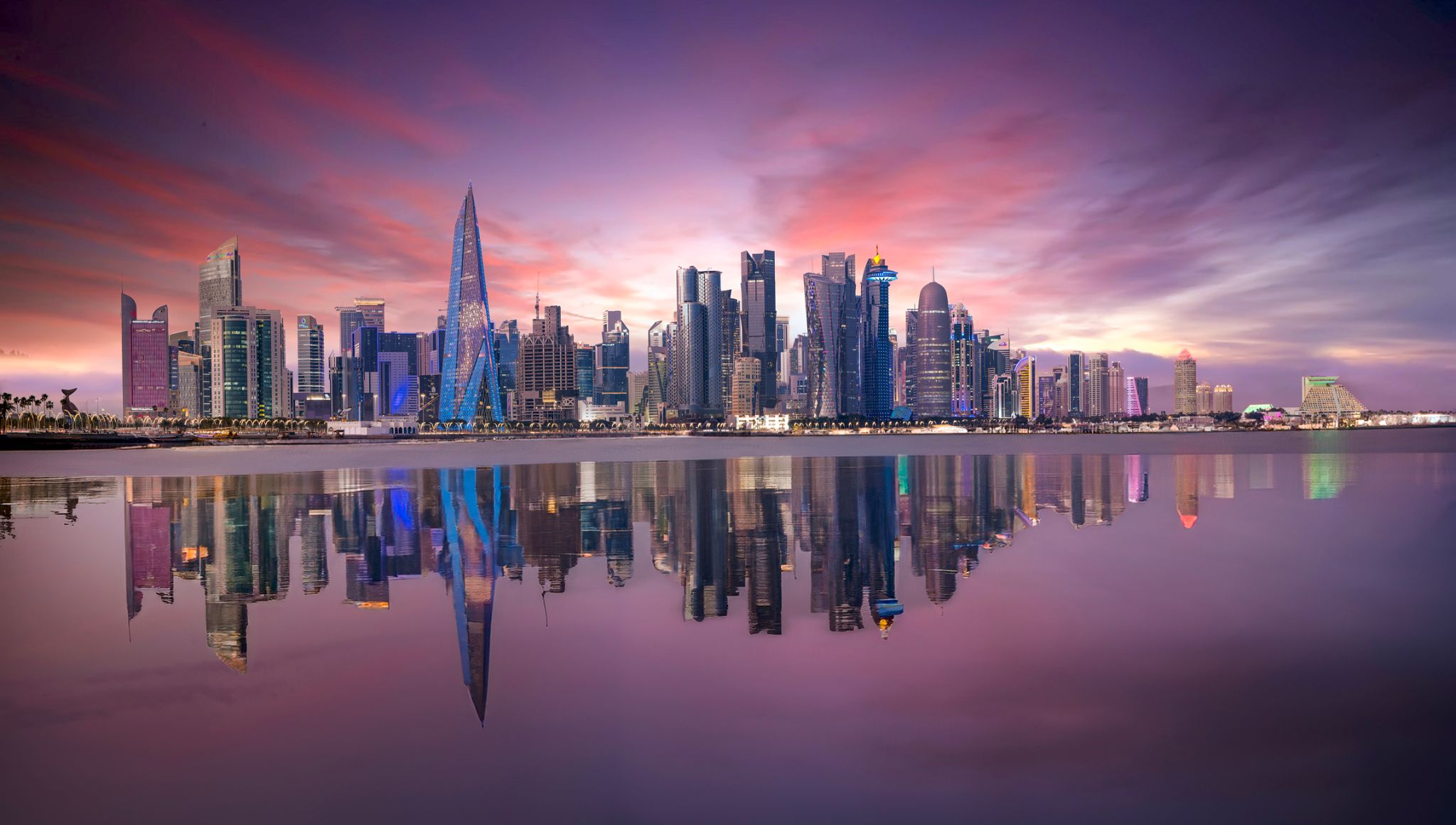
the capital of Qatar, in the eastern part of the country; pop 385,000 (est. 2007).
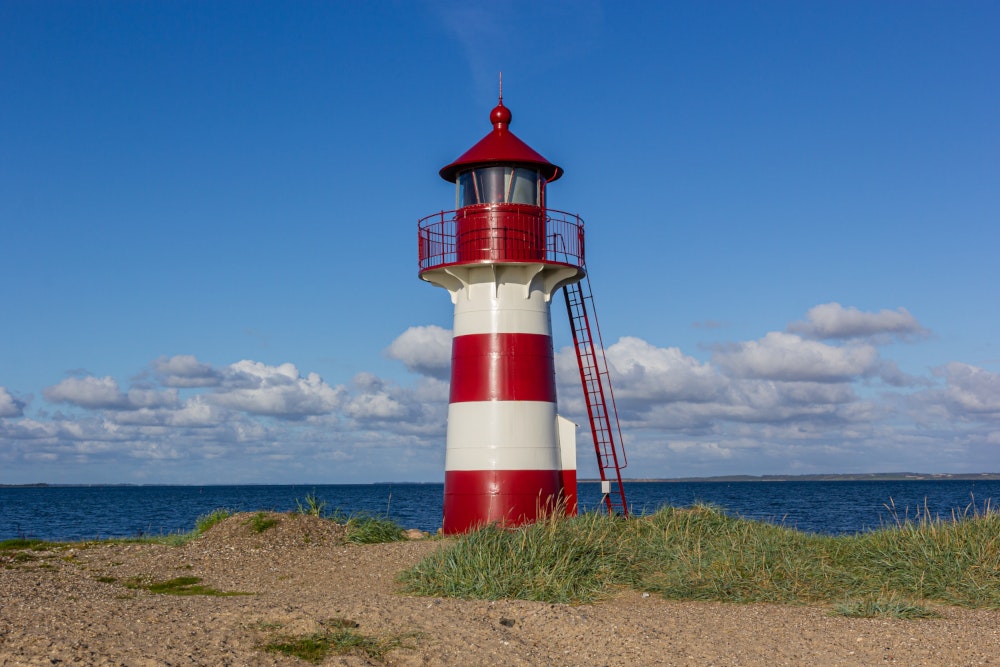
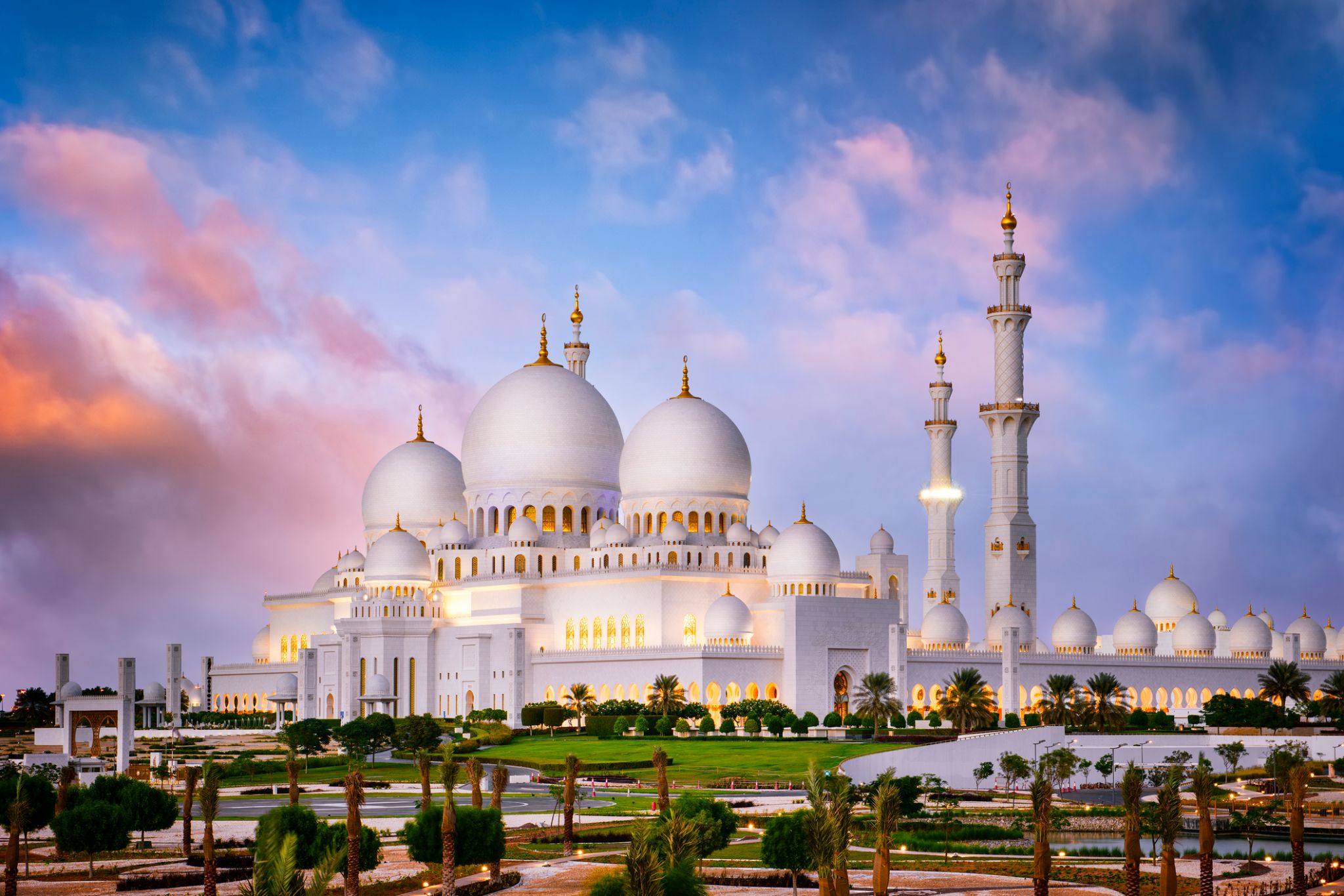
Abu Zabi jest stolicą i drugim co do wielkości miastem Zjednoczonych Emiratów Arabskich (najludniejszym jest Dubaj) oraz stolicą Emiratu Abu Zabi, największego z siedmiu emiratów UAE. Abu Zabi leży na wyspie w kształcie litery T, która wychodzi w Zatokę Perską z centralnego zachodniego wybrzeża. Miasto Abu Zabi miało szacowaną liczbę ludności 1,8 miliona w 2016 roku.
Abu Zabi mieści urzędy rządowe federalne, jest siedzibą Rządu Zjednoczonych Emiratów Arabskich, domem dla Rodziny Emira Abu Zabi oraz Prezydenta UAE, który pochodzi z tej rodziny. Szybki rozwój Abu Zabi i urbanizacja, w połączeniu z relatywnie wysokim średnim dochodem jego populacji, przekształciły miasto w dużą i zaawansowaną metropolię. Dziś miasto jest centrum politycznym i przemysłowym kraju, a także głównym ośrodkiem kulturalnym i handlowym, ze względu na swoją pozycję stolicy. Abu Zabi odpowiada za około dwie trzecie mniej więcej 400-miliardowej gospodarki Zjednoczonych Emiratów Arabskich.
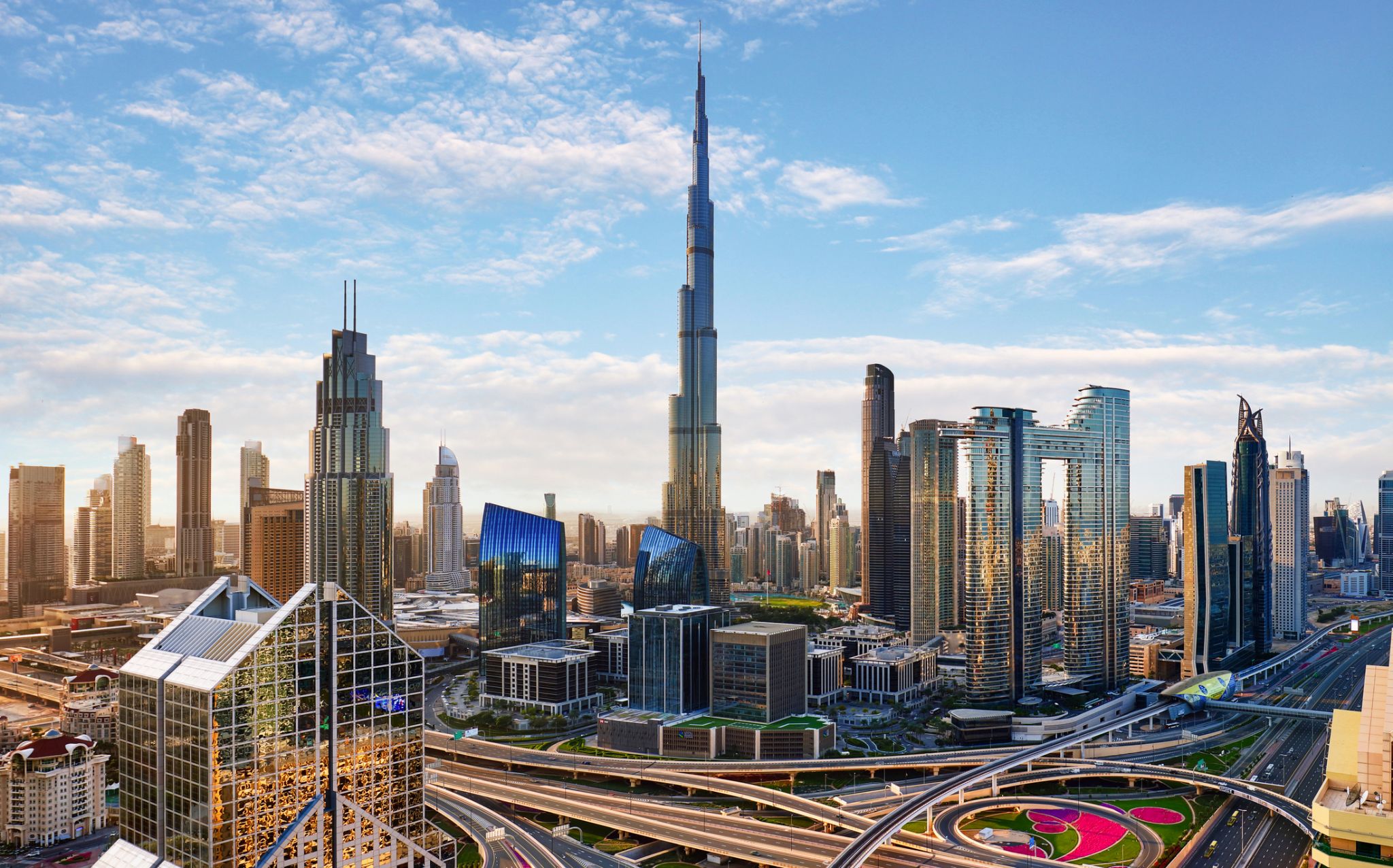
Dubai is the largest and most populous cityin the United Arab Emirates (UAE). On the southeast coast of the Persian Gulf, it is the capital of the Emirate of Dubai, one of the seven emirates that make up the country.
Dubai is a global city and business hub of the Middle East. It is also a major global transport hub for passengers and cargo. Oil revenue helped accelerate the development of the city, which was already a major mercantile hub, but Dubai's oil reserves are limited and production levels are low: today, less than 5% of the emirate's revenue comes from oil. A growing centre for regional and international trade since the early 20th century, Dubai's economy today relies on revenues from trade, tourism, aviation, real estate, and financial services.
Dubai has attracted world attention through large construction projects and sports events, in particular the world's tallest building, the Burj Khalifa. As of 2012, Dubai was the most expensive city in the Middle East. In 2014, Dubai's hotel rooms were rated as the second most expensive in the world.

Dubai is the largest and most populous cityin the United Arab Emirates (UAE). On the southeast coast of the Persian Gulf, it is the capital of the Emirate of Dubai, one of the seven emirates that make up the country.
Dubai is a global city and business hub of the Middle East. It is also a major global transport hub for passengers and cargo. Oil revenue helped accelerate the development of the city, which was already a major mercantile hub, but Dubai's oil reserves are limited and production levels are low: today, less than 5% of the emirate's revenue comes from oil. A growing centre for regional and international trade since the early 20th century, Dubai's economy today relies on revenues from trade, tourism, aviation, real estate, and financial services.
Dubai has attracted world attention through large construction projects and sports events, in particular the world's tallest building, the Burj Khalifa. As of 2012, Dubai was the most expensive city in the Middle East. In 2014, Dubai's hotel rooms were rated as the second most expensive in the world.
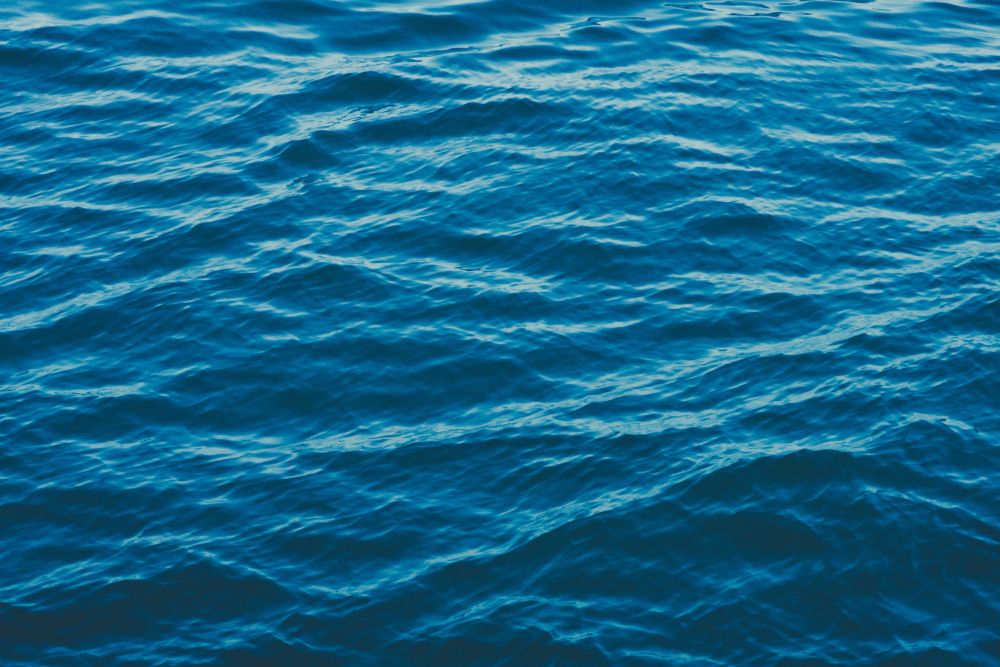





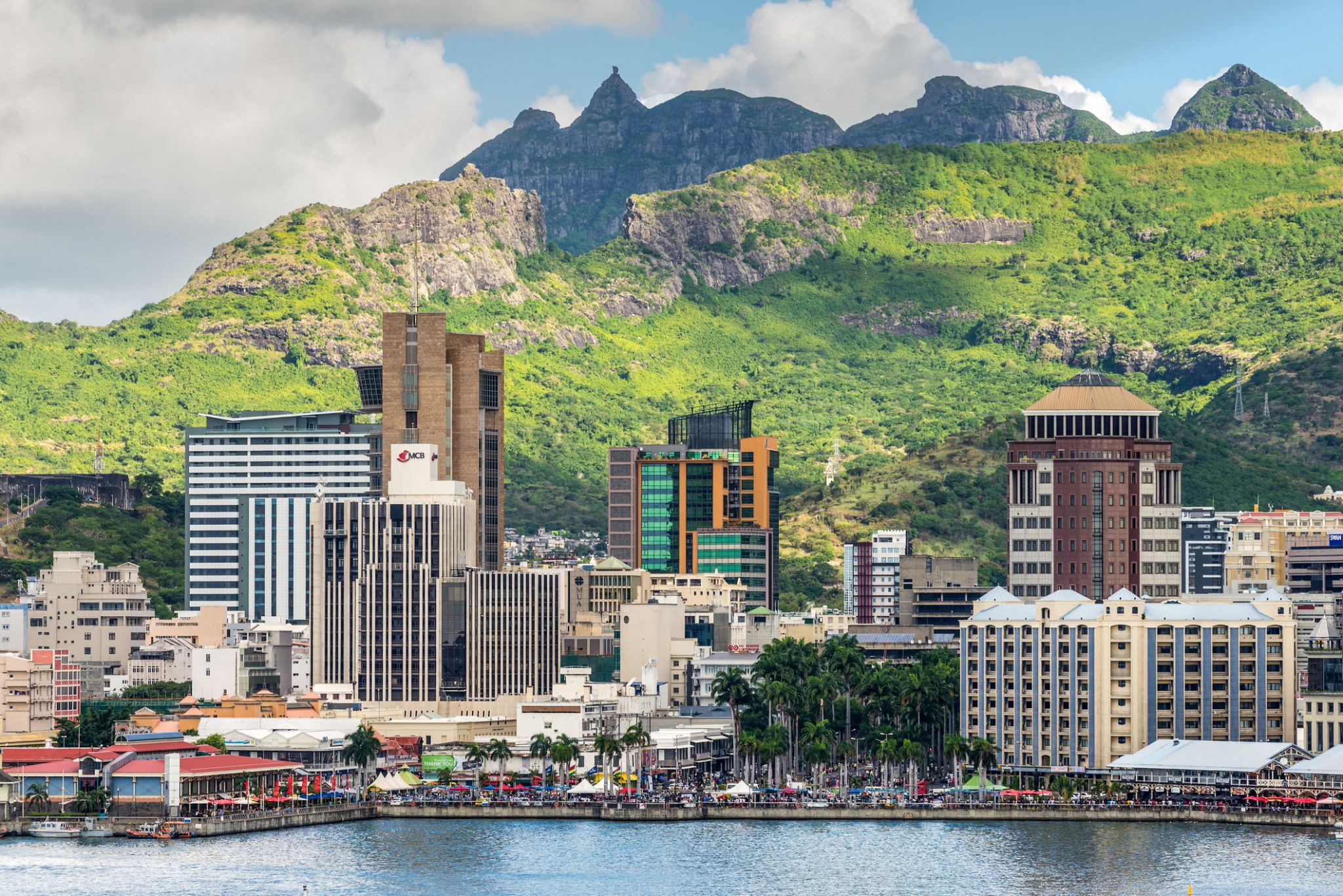
Port Louis to stolica i główny port Mauritiusa, położony na północno-zachodnim wybrzeżu wyspy. Tętniące życiem miasto łączy w sobie dziedzictwo kolonialne, nowoczesne centra biznesowe i barwną kulturę kreolską. W historycznym centrum zachowały się budynki z czasów francuskiego i brytyjskiego panowania. Jedną z najważniejszych atrakcji jest Fort Adelaide (znany także jako Cytadela), z którego rozciąga się panoramiczny widok na miasto i port. W pobliżu znajduje się lokalny targ – barwne serce codziennego życia, pełne przypraw, owoców, tekstyliów i rękodzieła.
Miasto słynie również z muzeów, w tym Muzeum Poczty, gdzie znajduje się pierwsza znaczka Mauritiusa – słynna „Blue Mauritius”. Poza zabytkami, Port Louis oferuje wspaniałe doświadczenia kulinarne, będące mieszanką wpływów kuchni indyjskiej, chińskiej, afrykańskiej i europejskiej. Wieczorem warto wybrać się na spacer promenadą Caudan Waterfront, pełną butików, kawiarni i atrakcji.






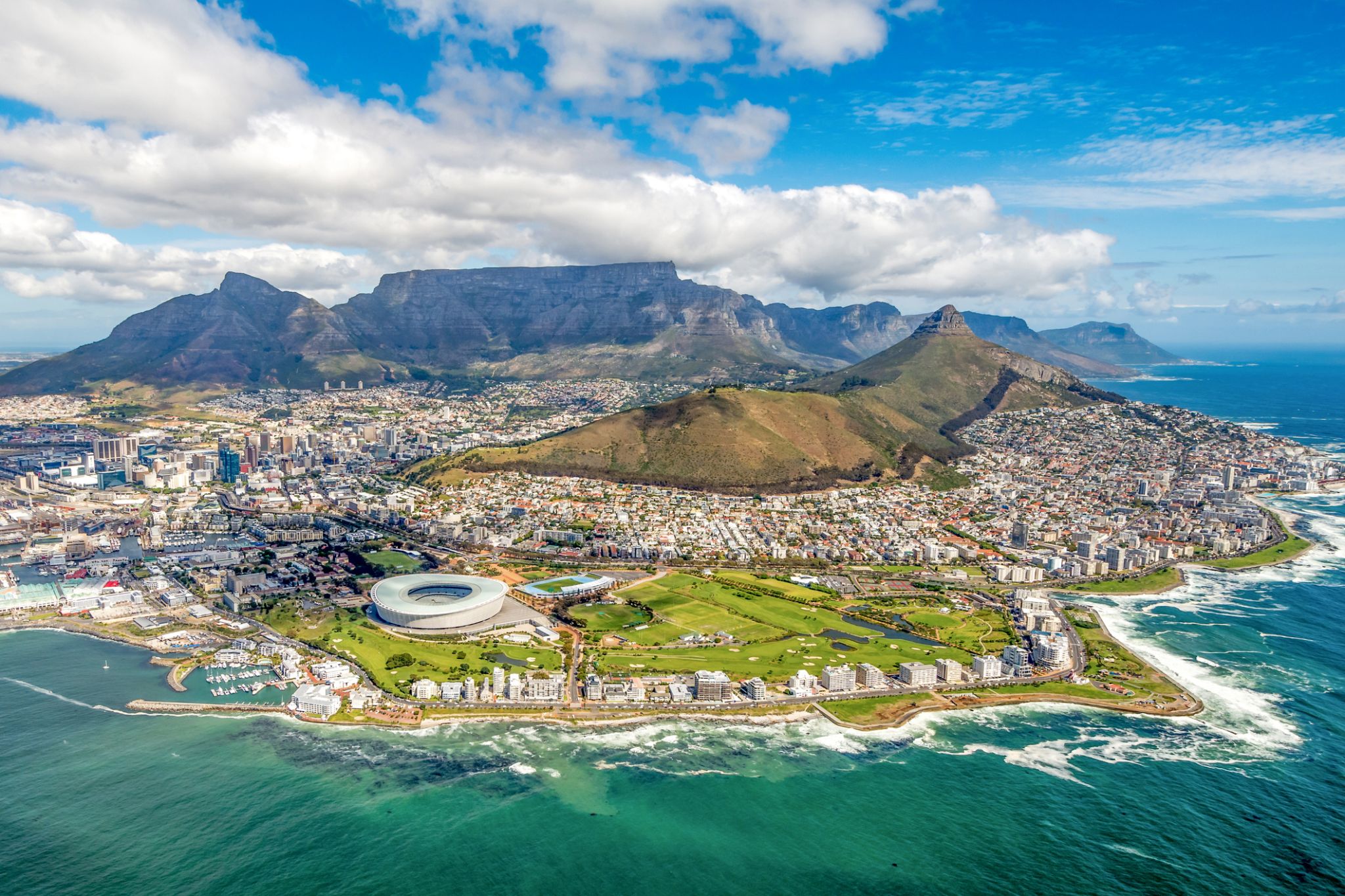
Cape Town is the oldest city in South Africa, colloquially named the Mother City. It is the legislative capital of South Africa and primate city of the Western Cape province. It forms part of the City of Cape Town metropolitan municipality.
The Parliament of South Africa sits in Cape Town. The other two capitals are located in Pretoria (the administrative capital where the Presidency is based) and Bloemfontein (the judicial capital where the Supreme Court of Appeal is located). The city is known for its harbour, for its natural setting in the Cape Floristic Region, and for landmarks such as Table Mountain and Cape Point. As of 2014, it is the 10th most populous city in Africa and home to 64% of the Western Cape's population. It is one of the most multicultural cities in the world, reflecting its role as a major destination for immigrants and expatriates to South Africa. The city was named the World Design Capital for 2014 by the International Council of Societies of Industrial Design. In 2014, Cape Town was named the best place in the world to visit by both The New York Times and The Daily Telegraph.
Located on the shore of Table Bay, Cape Town, as the oldest urban area in South Africa, was developed by the Dutch East India Company (VOC) as a supply station for Dutch ships sailing to East Africa, India, and the Far East. Jan van Riebeeck's arrival on 6 April 1652 established Dutch Cape Colony, the first permanent European settlement in South Africa. Cape Town outgrew its original purpose as the first European outpost at the Castle of Good Hope, becoming the economic and cultural hub of the Cape Colony. Until the Witwatersrand Gold Rush and the development of Johannesburg, Cape Town was the largest city in South Africa.

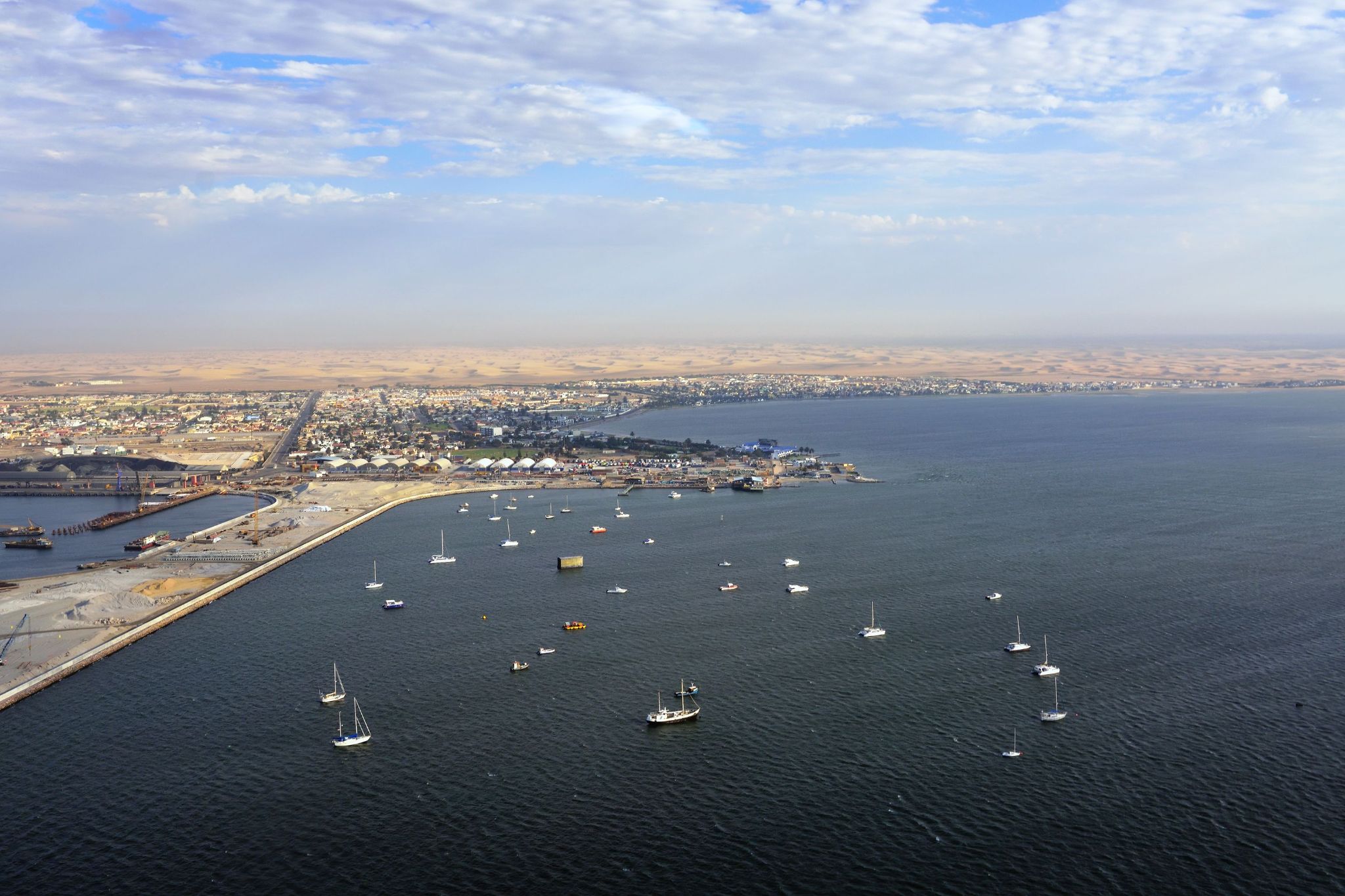
Walvis Bay — morskie wrota Namibii
Walvis Bay, położone nad Oceanem Atlantyckim w Namibii, to wyjątkowe połączenie przemysłowego portu i naturalnego raju. Miasto słynie z rozległej laguny — jednej z największych w Afryce — gdzie przez cały rok można obserwować flamingi, pelikany i inne ptaki wodne. To jedno z najlepszych miejsc w Afryce do obserwacji morskiej fauny: rejsy łodzią pozwalają dostrzec foki, delfiny, a czasem nawet wieloryby. Lagunę chętnie odwiedzają także kitesurferzy i windsurferzy dzięki stałym wiatrom i przestrzeniom wodnym.
Miasto odgrywa kluczową rolę gospodarczą jako największy port Namibii i centrum przemysłu rybnego. Walvis Bay przyciąga jednak nie tylko swoją funkcją, ale też sąsiedztwem z pustynią Namib, której słynne wydmy i księżycowe krajobrazy zaczynają się tuż za miastem. Takie niezwykłe połączenie morza i pustyni czyni to miejsce niezapomnianym punktem na mapie południowo-zachodniej Afryki.

Walvis Bay — morskie wrota Namibii
Walvis Bay, położone nad Oceanem Atlantyckim w Namibii, to wyjątkowe połączenie przemysłowego portu i naturalnego raju. Miasto słynie z rozległej laguny — jednej z największych w Afryce — gdzie przez cały rok można obserwować flamingi, pelikany i inne ptaki wodne. To jedno z najlepszych miejsc w Afryce do obserwacji morskiej fauny: rejsy łodzią pozwalają dostrzec foki, delfiny, a czasem nawet wieloryby. Lagunę chętnie odwiedzają także kitesurferzy i windsurferzy dzięki stałym wiatrom i przestrzeniom wodnym.
Miasto odgrywa kluczową rolę gospodarczą jako największy port Namibii i centrum przemysłu rybnego. Walvis Bay przyciąga jednak nie tylko swoją funkcją, ale też sąsiedztwem z pustynią Namib, której słynne wydmy i księżycowe krajobrazy zaczynają się tuż za miastem. Takie niezwykłe połączenie morza i pustyni czyni to miejsce niezapomnianym punktem na mapie południowo-zachodniej Afryki.










Turkusowe wody Atlantyku i wulkaniczne krajobrazy wyspy tworzą niepowtarzalną atmosferę w Arrecife de Lanzarote, stolicy jednej z najbardziej wyjątkowych Wysp Kanaryjskich. Miasto przyciąga podróżników przytulnym portem, białymi domami w tradycyjnym stylu oraz artystycznym dziedzictwem Césara Manrique – architekta, który tchnął życie w Lanzarote, łącząc naturę ze sztuką.
W Arrecife de Lanzarote warto przespacerować się promenadą do zamku San Gabriel, odwiedzić targ La Recova i spróbować świeżych owoców morza z widokiem na zatokę. To miejsce jest idealne zarówno na spokojny wypoczynek na plaży, jak i na odkrywanie wulkanicznych krajobrazów Parku Narodowego Timanfaya, położonego zaledwie pół godziny drogi stąd.
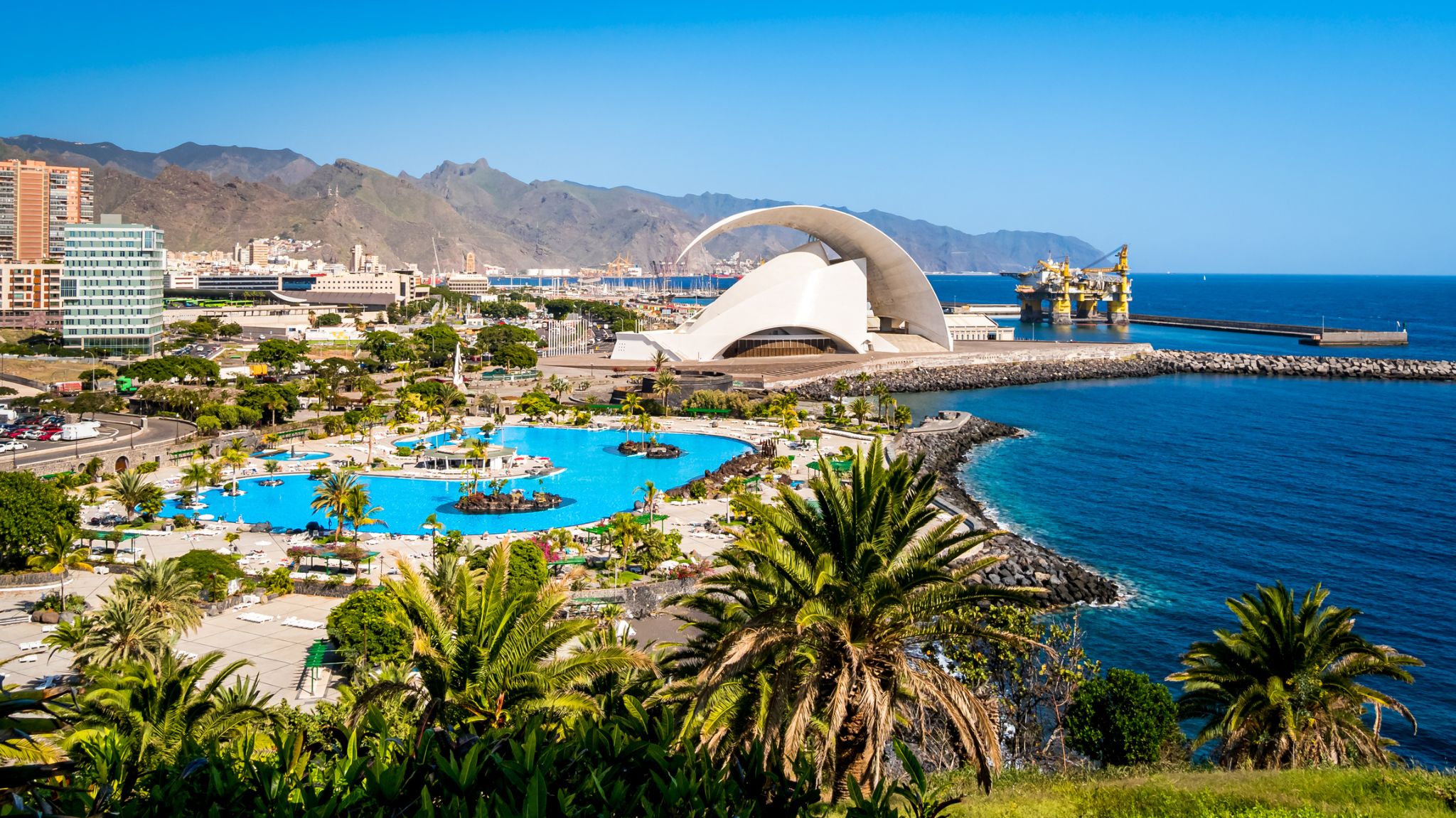

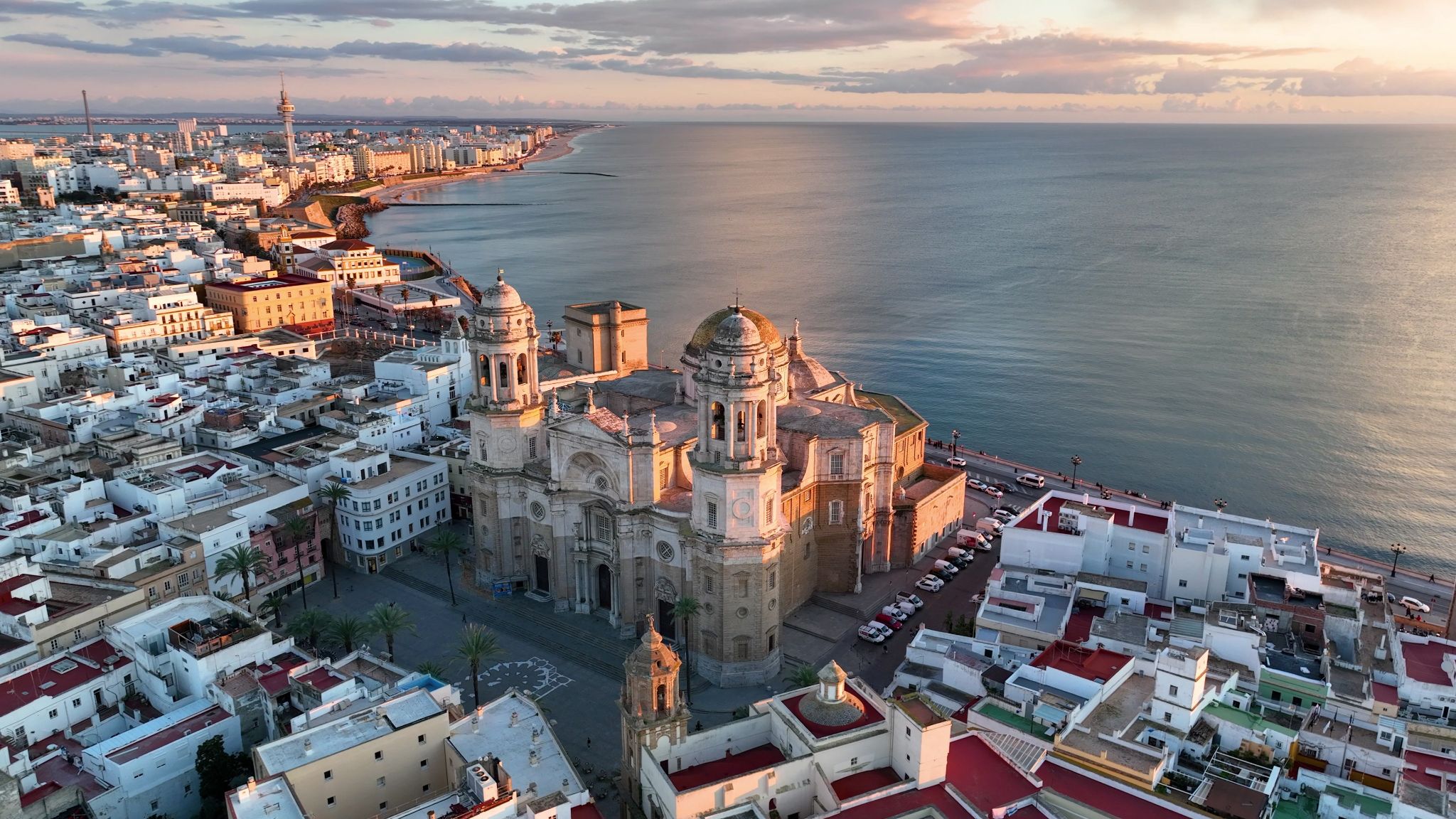
Cádiz jest jednym z najstarszych miast w Europie, położonym na południowo-zachodnim wybrzeżu Hiszpanii w sercu Andaluzji. Miasto znajduje się na półwyspie, otoczone przez Ocean Atlantycki, co nadaje mu wyjątkową atmosferę. Cádiz jest znane z malowniczych plaż, takich jak Playa de la Victoria, a także ze starożytnych uliczek z białymi domami i wspaniałymi fasadami, które przypominają o mauretańskiej i kolonialnej historii. W historycznym centrum miasta znajduje się słynna katedra, której budowa trwała ponad wiek, a z jej wieży roztacza się imponujący widok na ocean.
Miasto jest również znane z tradycji karnawałowych oraz pysznej kuchni, w której dominują owoce morza. Lokalny karnawał uważany jest za jeden z najbarwniejszych w Hiszpanii, przyciągający co roku tysiące turystów.

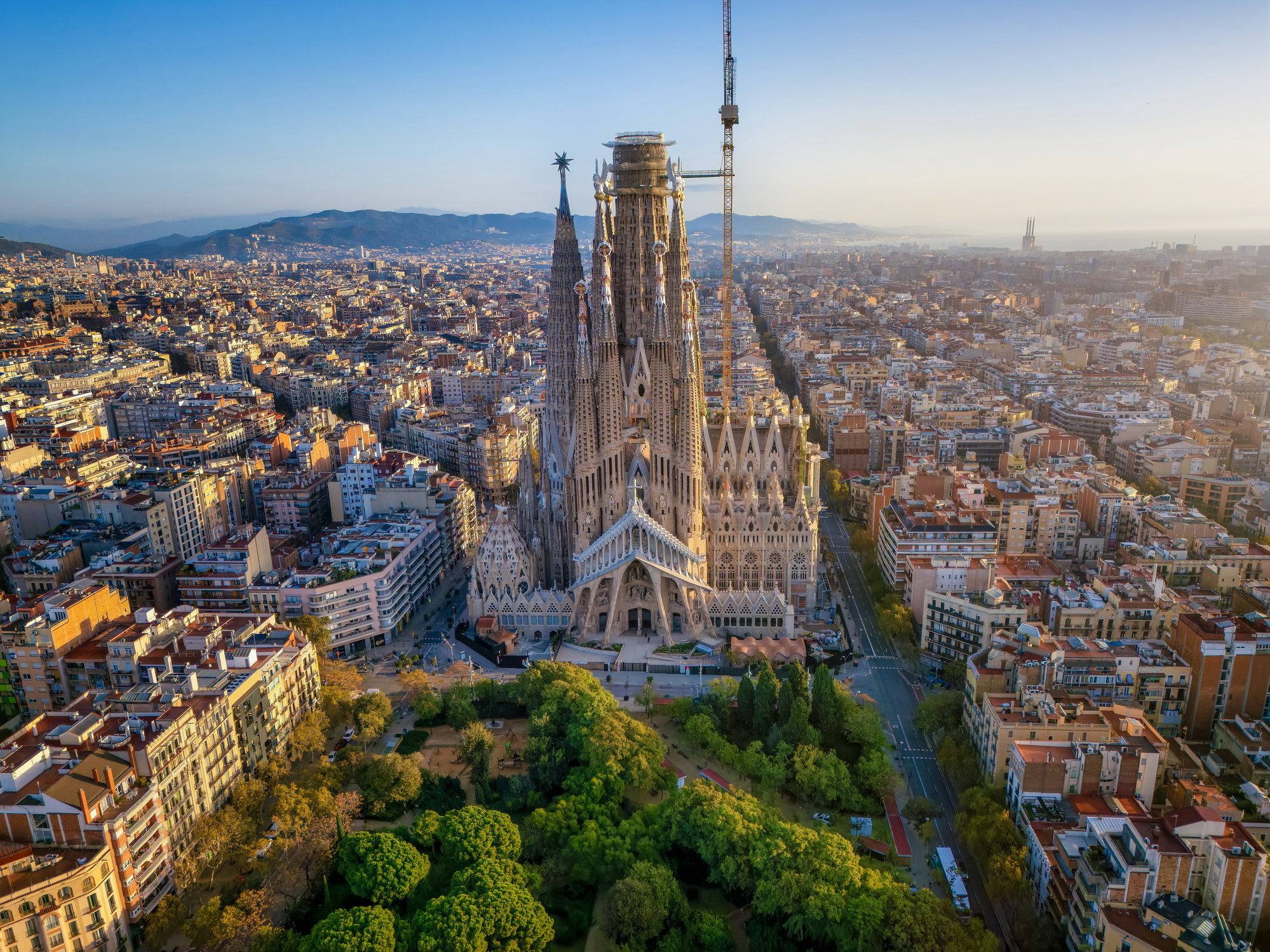
Mając reputację jednego z najatrakcyjniejszych miast w Europie, Barcelona świętuje swoją rolę stolicy Katalonii. Kosmopolityczna i międzynarodowa atmosfera miasta sprawia, że jest to ulubione miejsce wielu ludzi na całym świecie. Miasto jest szczególnie znane ze swojej architektury i sztuki – podróżnicy z całego świata przybywają, aby zobaczyć słynną Sagrada Familia i inne modernistyczne zabytki zaprojektowane przez Gaudiego.
Barcelona to miasto z licznymi i oryginalnymi możliwościami spędzania czasu wolnego, które sprawiają, że chcesz tu wracać. Położona na wybrzeżu Morza Śródziemnego Barcelona słynie z arcydzieł Gaudiego i architektury secesyjnej: jest jednym z najbardziej stylowych miast europejskich.
Miasto jest ośrodkiem nowych trendów w świecie kultury, mody i gastronomii. Dopełnieniem kreatywności artystów i projektantów jest ostrożne podejście do tradycyjnych placówek. Barcelona łączy w sobie urok i spokój historycznego centrum z awangardowymi nowoczesnymi dzielnicami i intensywnym tempem życia w jednym z najczęściej odwiedzanych miast na świecie.
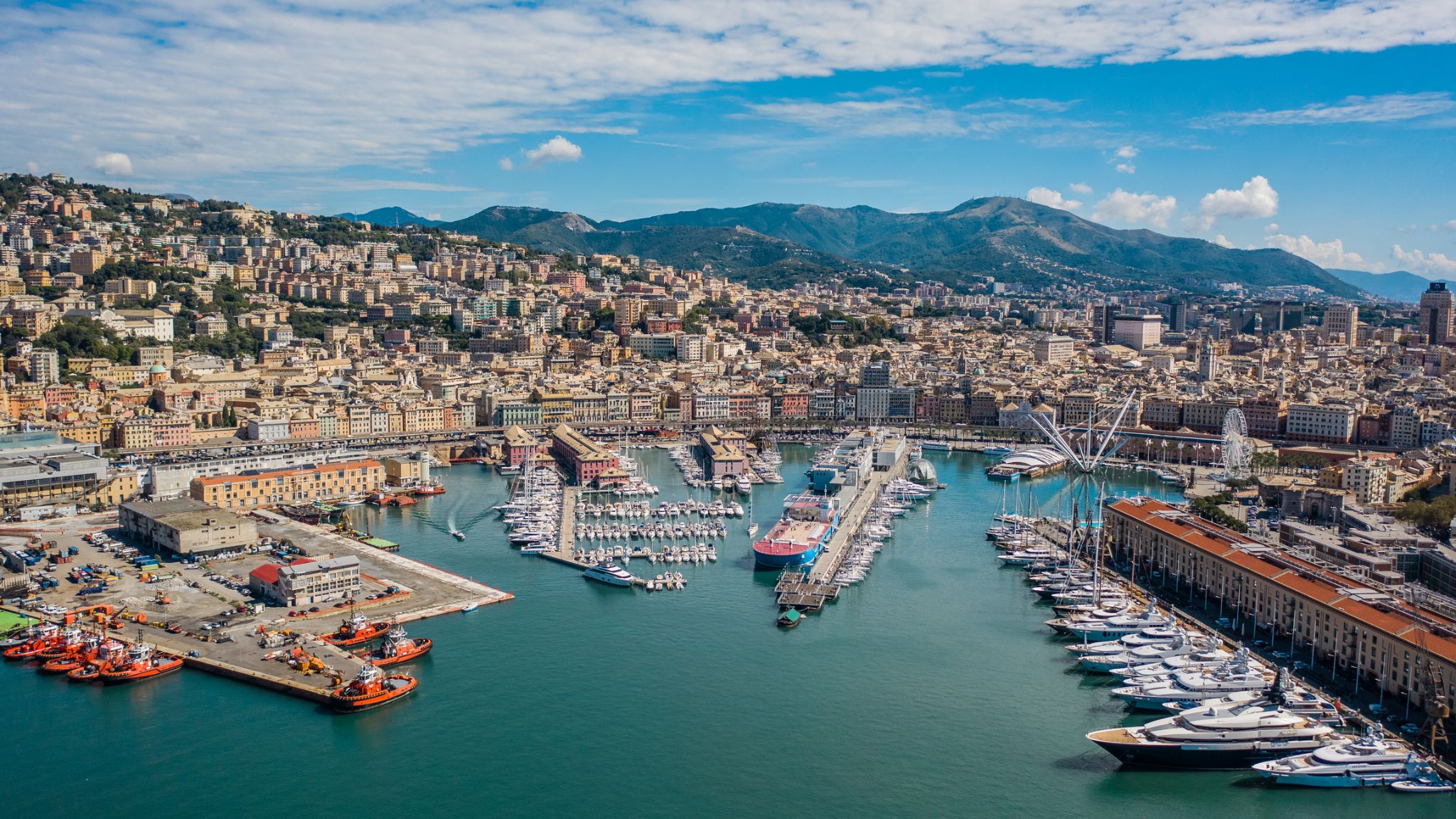
Genoa is the capital of the Italian region of Liguria and the sixth-largest city in Italy. In 2015, 594,733 people lived within the city's administrative limits. As of the 2011 Italian census, the Province of Genoa, which in 2015 became the Metropolitan City of Genoa, counted 855,834 resident persons. Over 1.5 million people live in the wider metropolitan area stretching along the Italian Riviera.
Located on the Gulf of Genoa in the Ligurian Sea, Genoa has historically been one of the most important ports on the Mediterranean: it is currently the busiest in Italy and in the Mediterranean Sea and twelfth-busiest in the European Union. Genoa has been nicknamed la Superba ("the proud one") due to its glorious past and impressive landmarks. Part of the old town of Genoa was inscribed on the World Heritage List (UNESCO) in 2006 as Genoa: Le Strade Nuove and the system of the Palazzi dei Rolli. The city's rich cultural history in art, music and cuisine allowed it to become the 2004 European Capital of Culture. It is the birthplace of Christopher Columbus, Andrea Doria, Niccolò Paganini, Giuseppe Mazzini, Renzo Piano and Grimaldo Canella, founder of the House of Grimaldi, among others.
Genoa, which forms the southern corner of the Milan-Turin-Genoa industrial triangle of Northwest Italy, is one of the country's major economic centers. The city has hosted massive shipyards and steelworks since the 19th century, and its solid financial sector dates back to the Middle Ages. The Bank of Saint George, founded in 1407, is among the oldest in the world and has played an important role in the city's prosperity since the middle of the 15th century. Today a number of leading Italian companies are based in the city, including Fincantieri, Selex ES, Ansaldo Energia, Ansaldo STS, Edoardo Raffinerie Garrone, Piaggio Aerospace, Mediterranean Shipping Company and Costa Cruises.
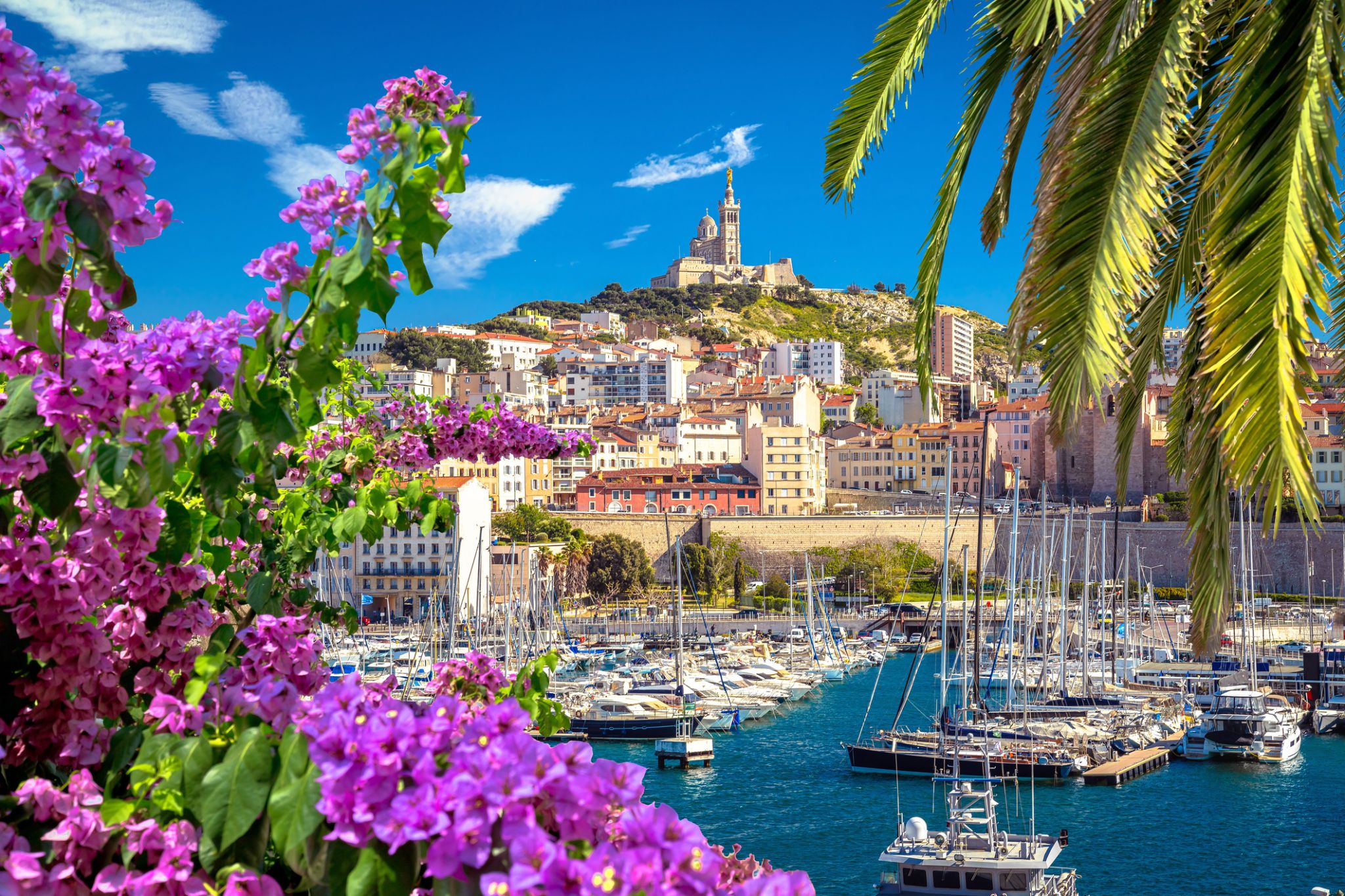
Marseille is the second-largest city of France. The main city of the historical province of Provence, it nowadays is the prefecture of the department of Bouches-du-Rhône and region of Provence-Alpes-Côte d'Azur. It is located on France's south coast near the mouth of the Rhône river. The city covers an area of 241 km2 (93 sq mi) and had a population of 852,516 in 2012. Its metropolitan area, which extends over 3,173 km2 (1,225 sq mi) is the third-largest in France after Paris and Lyon, with a population of 1,831,500 as of 2010.
Known to the ancient Greeks and Romans as Massalia, Marseille was an important European trading centre and remains the main commercial port of the French Republic. Marseille is now France's largest city on the Mediterranean coast and the largest port for commerce, freight and cruise ships. The city was European Capital of Culture in 2013 and European Capital of Sport in 2017; it hosted matches at the 1998 World Cup and Euro 2016. It is home to Aix-Marseille University.

Mając reputację jednego z najatrakcyjniejszych miast w Europie, Barcelona świętuje swoją rolę stolicy Katalonii. Kosmopolityczna i międzynarodowa atmosfera miasta sprawia, że jest to ulubione miejsce wielu ludzi na całym świecie. Miasto jest szczególnie znane ze swojej architektury i sztuki – podróżnicy z całego świata przybywają, aby zobaczyć słynną Sagrada Familia i inne modernistyczne zabytki zaprojektowane przez Gaudiego.
Barcelona to miasto z licznymi i oryginalnymi możliwościami spędzania czasu wolnego, które sprawiają, że chcesz tu wracać. Położona na wybrzeżu Morza Śródziemnego Barcelona słynie z arcydzieł Gaudiego i architektury secesyjnej: jest jednym z najbardziej stylowych miast europejskich.
Miasto jest ośrodkiem nowych trendów w świecie kultury, mody i gastronomii. Dopełnieniem kreatywności artystów i projektantów jest ostrożne podejście do tradycyjnych placówek. Barcelona łączy w sobie urok i spokój historycznego centrum z awangardowymi nowoczesnymi dzielnicami i intensywnym tempem życia w jednym z najczęściej odwiedzanych miast na świecie.

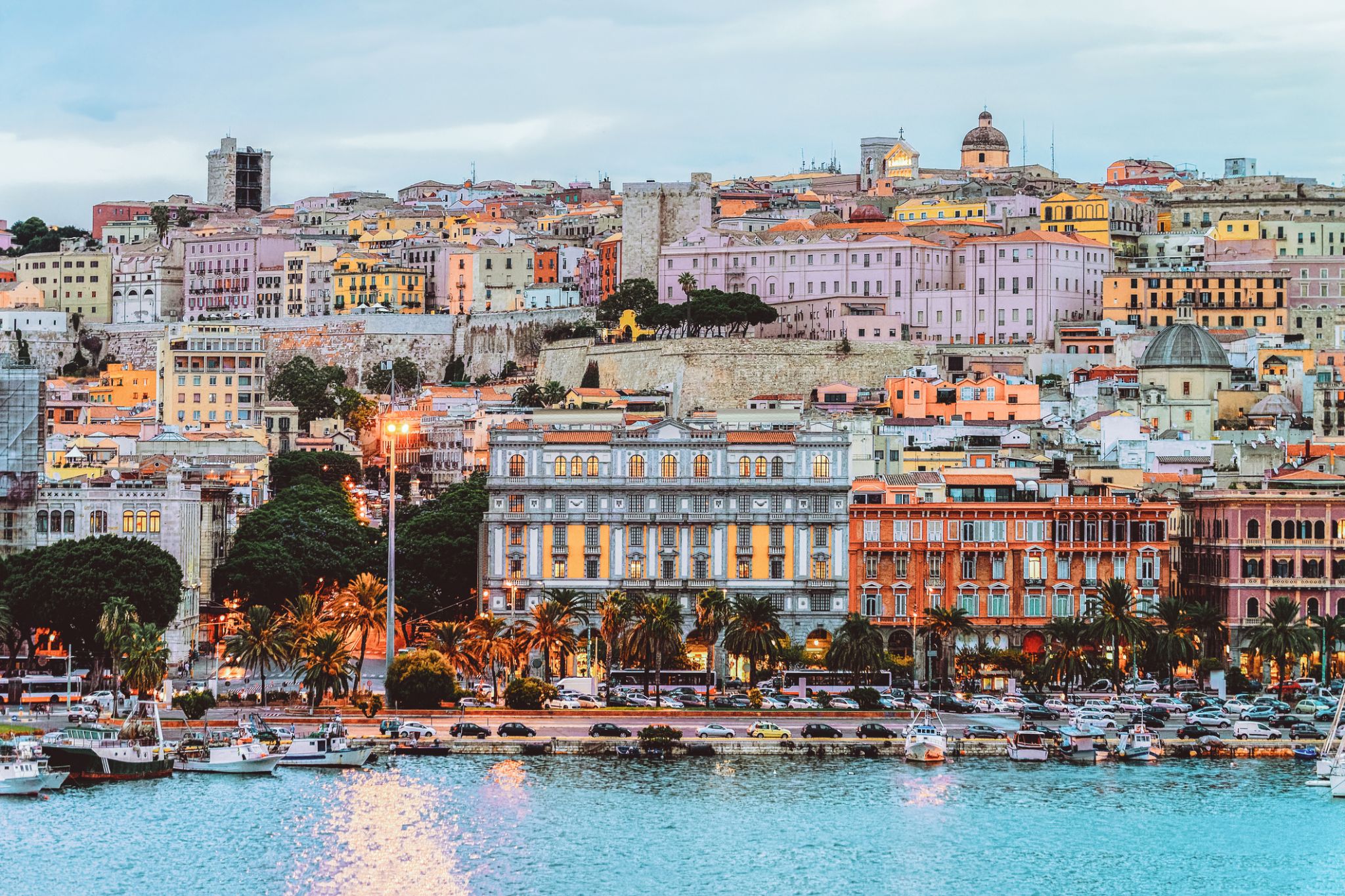
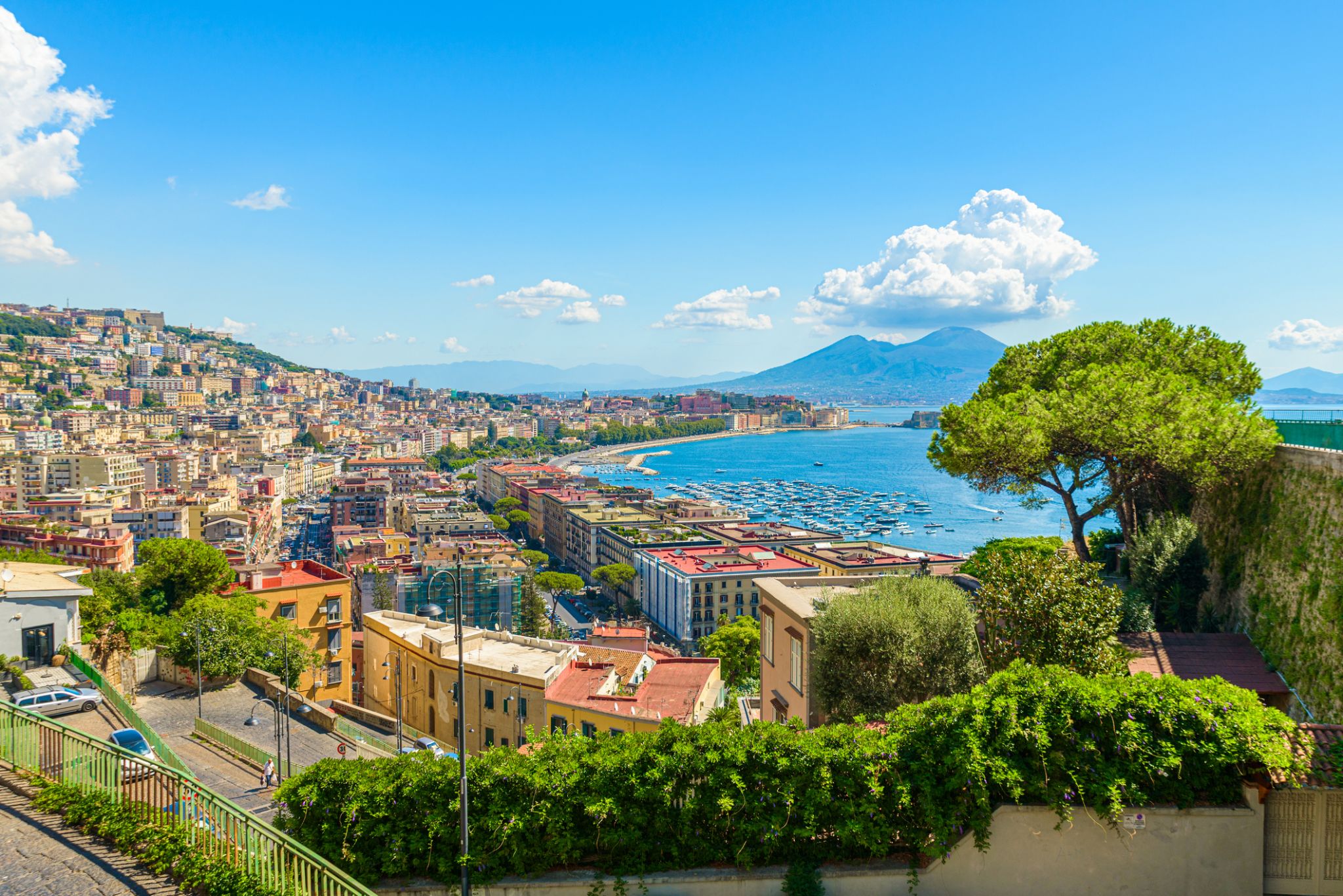
Naples is the regional capital of Campania and the third-largest municipality in Italyafter Rome and Milan. In 2017, around 967,069 people lived within the city's administrative limits while its province-level municipality has a population of 3,115,320 residents. Its continuously built-up metropolitan area (that stretches beyond the boundaries of the Metropolitan City of Naples) is the second or third largest metropolitan area in Italy and one of the most densely populated cities in Europe.
First settled by Greeks in the second millennium BC, Naples is one of the oldest continuously inhabited urban areas in the world. In the ninth century BC, a colony known as Parthenope or Παρθενόπη was established on the Island of Megaride, later refounded as Neápolis in the sixth century BC. The city was an important part of Magna Graecia, played a major role in the merging of Greek and Roman society and a significant cultural centre under the Romans. It served as the capital of the Duchy of Naples (661–1139), then of the Kingdom of Naples (1282–1816) and finally of the Two Sicilies until the unification of Italy in 1861.
Between 1925 and 1936, Naples was expanded and upgraded by Benito Mussolini's government but subsequently sustained severe damage from Allied bombing during World War II, which led to extensive post-1945 reconstruction work. Naples has experienced significant economic growth in recent decades, helped by the construction of the Centro Direzionale business district and an advanced transportation network, which includes the Alta Velocità high-speed rail link to Rome and Salerno and an expanded subway network. Naples is the third-largest urban economy in Italy, after Milan and Rome. The Port of Naples is one of the most important in Europe and home of the Allied Joint Force Command Naples, the NATO body that oversees North Africa, the Sahel and Middle East.
Naples' historic city centre is the largest in Europe and a UNESCO World Heritage Site, with a wide range of culturally and historically significant sites nearby, including the Palace of Caserta and the Roman ruins of Pompeii and Herculaneum. Naples is also known for its natural beauties such as Posillipo, Phlegraean Fields, Nisida, and Vesuvius.
Neapolitan cuisine is synonymous with pizza – which originated in the city – but it also includes many lesser-known dishes; Naples has the greatest number of accredited stars from the Michelin Guide of any Italian city.
The best-known sports team in Naples is the Serie A club S.S.C. Napoli, two-time Italian champions who play at the San Paolo Stadium in the southwest of the city, in the Fuorigrotta quarter.
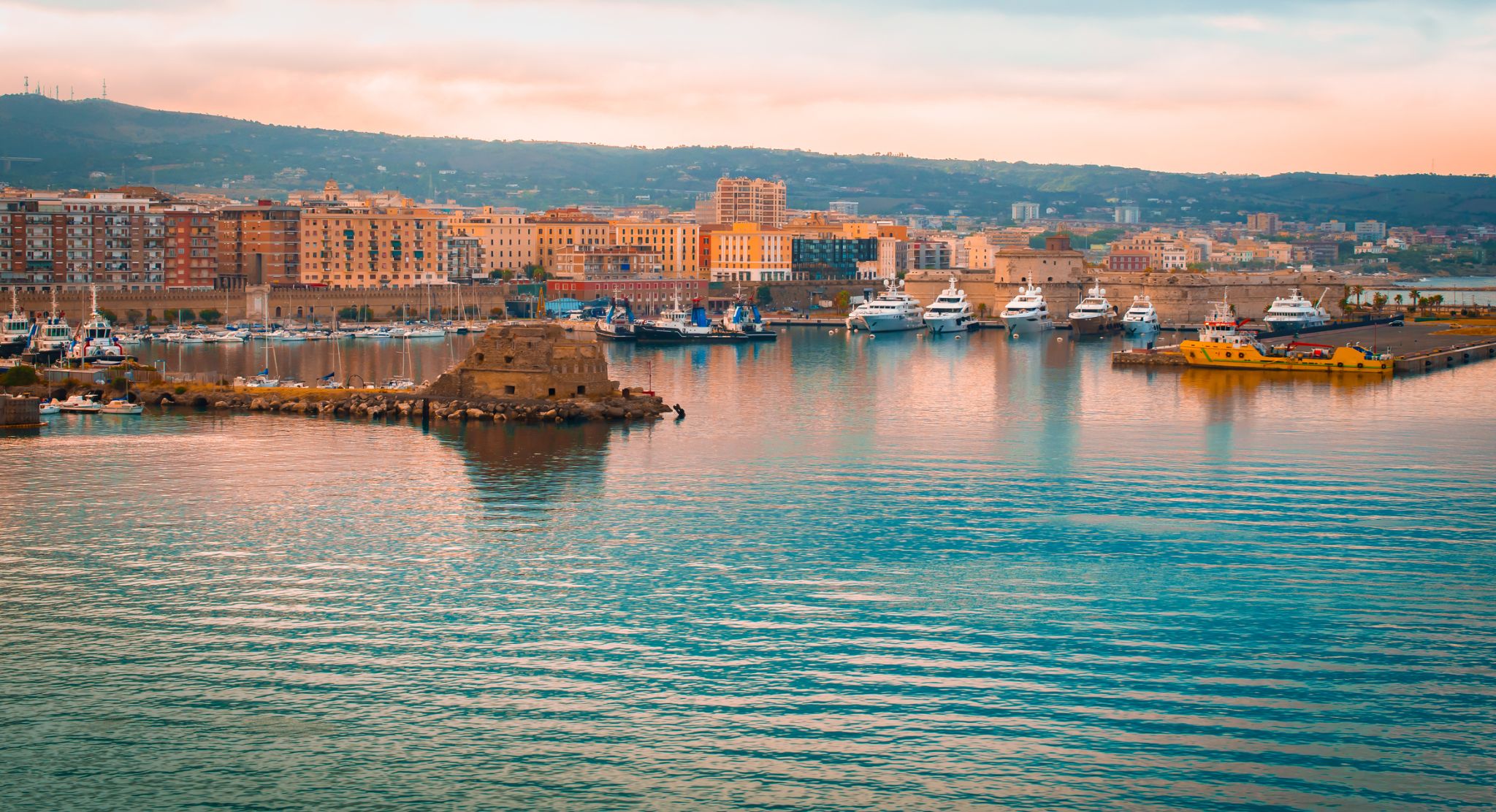
Rome is the capital city and a special comune of Italy (named Comune di Roma Capitale). Rome also serves as the capital of the Lazio region. With 2,872,800 residents in 1,285 km2(496.1 sq mi), it is also the country's most populated comune. It is the fourth-most populous city in the European Union by population within city limits. It is the centre of the Metropolitan City of Rome, which has a population of 4,355,725 residents, thus making it the most populous metropolitan city in Italy. Rome is located in the central-western portion of the Italian Peninsula, within Lazio (Latium), along the shores of the Tiber. The Vatican City (the smallest country in the world) is an independent country inside the city boundaries of Rome, the only existing example of a country within a city: for this reason Rome has been often defined as capital of two states.
Rome's history spans 28 centuries. While Roman mythology dates the founding of Rome at around 753 BC, the site has been inhabited for much longer, making it one of the oldest continuously occupied sites in Europe. The city's early population originated from a mix of Latins, Etruscans, and Sabines. Eventually, the city successively became the capital of the Roman Kingdom, the Roman Republic and the Roman Empire, and is regarded as the birthplace of Western civilization and by some as the first ever metropolis. It was first called The Eternal City (Latin: Urbs Aeterna; Italian: La Città Eterna) by the Roman poet Tibullus in the 1st century BC, and the expression was also taken up by Ovid, Virgil, and Livy. Rome is also called the "Caput Mundi" (Capital of the World). After the fall of the Western Empire, which marked the beginning of the Middle Ages, Rome slowly fell under the political control of the Papacy, which had settled in the city since the 1st century AD, until in the 8th century it became the capital of the Papal States, which lasted until 1870. Beginning with the Renaissance, almost all the popes since Nicholas V (1447–1455) pursued over four hundred years a coherent architectural and urban programme aimed at making the city the artistic and cultural centre of the world. In this way, Rome became first one of the major centres of the Italian Renaissance, and then the birthplace of both the Baroque style and Neoclassicism. Famous artists, painters, sculptors and architects made Rome the centre of their activity, creating masterpieces throughout the city. In 1871, Rome became the capital of the Kingdom of Italy, which, in 1946, became the Italian Republic.
Rome has the status of a global city. In 2016, Rome ranked as the 14th-most-visited city in the world, 3rd most visited in the European Union, and the most popular tourist attraction in Italy. Its historic centre is listed by UNESCO as a World Heritage Site. The famous Vatican Museums are among the world's most visited museums while the Colosseum was the most popular tourist attraction in world with 7.4 million visitors in 2018. Host city for the 1960 Summer Olympics, Rome is the seat of several specialized agencies of the United Nations, such as the Food and Agriculture Organization (FAO), the World Food Programme (WFP) and the International Fund for Agricultural Development (IFAD). The city also hosts the Secretariat of the Parliamentary Assembly of the Union for the Mediterranean (UfM) as well as the headquarters of many international business companies such as Eni, Enel, TIM, Leonardo S.p.A., and national and international banks such as Unicredit and BNL. Its business district, called EUR, is the base of many companies involved in the oil industry, the pharmaceutical industry, and financial services. Rome is also an important fashion and design centre thanks to renowned international brands centered in the city. Rome's Cinecittà Studios have been the set of many Academy Award–winning movies.